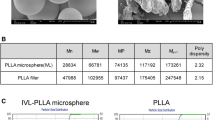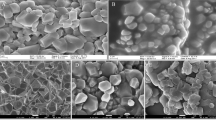Abstract
Background:
Hyaluronic acid dermal fillers are composed of cross-linked viscoelastic particles with high biocompatibility. The performance of the fillers is determined by the viscoelastic properties of particles and the connecting force between particles. However, the relationships among the properties of fillers, the interaction of the gels and the surrounding tissue are not clear enough.
Method:
Four kinds of typical dermal filler were selected in this research to reveal the interaction between the gels and cells. A series of analytical tools was applied to characterize the structure and physicochemical properties of the gel, as well as observing their interaction with the surrounding tissues in vivo and discussing their internal mechanism.
Result:
The large particles internal the gel and the high rheological properties endow the Restylane2 with excellent support. However, these large-size particles have a significant impact on the metabolism of the local tissue surrounding the gel. Juvéderm3 present gel integrity with the high cohesiveness and superior support. The rational matching of large and small particles provides the Juvéderm3 with supporting capacity and excellent biological performance. Ifresh is characterized by small-size particles, moderate cohesiveness, good integrity, lower viscoelasticity and the superior cellular activity located the surrounding tissues. Cryohyaluron has high cohesion and medium particle size and it is prominent in cell behaviors involving localized tissues. Specific macroporous structure in the gel may facilitate the nutrients delivering and removing the waste.
Conclusion:
It’s necessary to make the filler both sufficient support and biocompatibility through the rational matching of particle sizes and rheological properties. Gels with macroporous structured particle showed an advantage in this area by providing a space inside the particle.






Similar content being viewed by others
References
Iannitti T, Morales-Medina JC, Coacci A, Palmieri B. Experimental and clinical efficacy of two hyaluronic acid-based compounds of different cross-linkage and composition in the rejuvenation of the skin. Pharm Res. 2016;33:2879–90.
La Gatta A, Schiraldi C, Zaccaria G, Cassuto D. Hyaluronan dermal fillers: efforts towards a wider biophysical characterization and the correlation of the biophysical parameters to the clinical outcome. Clin Cosmet Investig Dermatol. 2020;13:87–97.
Beasley KL, Weiss MA, Weiss RA. Hyaluronic acid fillers: a comprehensive review. Facial Plast Surg. 2009;25:86–94.
American Society of Plastic Surgeons. 2013 plastic surgery statistic report. Arlington Heights: ASPS National Clearinghouse of Plastic Surgery Procedural Statistics; 2013.
Wu DC, Karnik J, Margarella T, Nguyen VL, Calame A, Goldman MP. Evaluation of the in vivo effects of various laser, light, or ultrasound modalities on human skin treated with a collagen and polymethylmethacrylate microsphere dermal filler product. Lasers Surg Med. 2016;48:811–9.
Sundaram H, Cassuto D. Biophysical characteristics of hyaluronic acid soft-tissue fillers and their relevance to aesthetic applications. Plast Reconstr Surg. 2013;132:5S-21S.
Trombino S, Servidio C, Curcio F, Cassano R. Strategies for hyaluronic acid-based hydrogel design in drug delivery. Pharmaceutics. 2019;11:407.
Preston BN, Davies M, Ogston AG. The composition and physicochemical properties of hyaluronic acids prepared from ox synovial fluid and from a case of mesothelioma. Biochem J. 1965;96:449–71.
Kablik J, Monheit GD, Yu L, Chang G, Gershkovich J. Comparative physical properties of hyaluronic acid dermal fillers. Dermatol Surg. 2009;35:302–12.
Stocks D, Sundaram H, Michaels J, Durrani MJ, Wortzman MS, Nelson DB. Rheological evaluation of the physical properties of hyaluronic acid dermal fillers. J Drugs Dermatol. 2011;10:974–80.
La Gatta A, Salzillo R, Catalano C, Pirozzi AVA, D'Agostino A, Bedini E, et al. Hyaluronan-based hydrogels via ether-crosslinking: is HA molecular weight an effective means to tune gel performance? Int J Biol Macromol. 2020;144:94–101.
Edsman K, Nord LI, Ohrlund A, Lärkner H, Kenne AH. Gel properties of hyaluronic acid dermal fillers. Dermatol Surg. 2012;38:1170–9.
Flynn TC, Sarazin D, Bezzola A, Terrani C, Micheels P. Comparative histology of intradermal implantation of mono and biphasic hyaluronic acid fillers. Dermatol Surg. 2011;37:637–43.
Choi SC, Yoo MA, Lee SY, Lee HJ, Son DH, Jung J, et al. Modulation of biomechanical properties of hyaluronic acid hydrogels by crosslinking agents. J Biomed Mater Res A. 2015;103:3072–80.
Verpaele A, Strand A. Restylane SubQ, a non-animal stabilized hyaluronic acid gel for soft tissue augmentation of the mid- and lower face. Aesthet Surg J. 2006;26:S10–7.
Bogdan Allemann I, Baumann L. Hyaluronic acid gel (Juvéderm) preparations in the treatment of facial wrinkles and folds. Clin Interv Aging. 2008;3:629–34.
Prager W, Wissmueller E, Havermann I, Bee EK, Howell DJ, Zschocke I, et al. A prospective, split-face, randomized, comparative study of safety and 12-month longevity of three formulations of hyaluronic acid dermal filler for treatment of nasolabial folds. Dermatol Surg. 2012;38:1143–50.
Pierre S, Liew S, Bernardin A. Basics of dermal filler rheology. Dermatol Surg. 2015;41:S120–6.
Hee CK, Shumate GT, Narurkar V, Bernardin A, Messina DJ. Rheological properties and in vivo performance characteristics of soft tissue fillers. Dermatol Surg. 2015;41:S373–81.
La Gatta A, Salzillo R, Catalano C, D'Agostino A, Pirozzi AVA, De Rosa M, et al. Hyaluronan-based hydrogels as dermal fillers: the biophysical properties that translate into a “volumetric” effect. PLoS One. 2019;14:e0218287.
Edsman KLM, Öhrlund Å. Cohesion of hyaluronic acid fillers: correlation between cohesion and other physicochemical properties. Dermatol Surg. 2018;44:557–62.
Romagnoli M, Belmontesi M. Hyaluronic acid-based fillers: theory and practice. Clin Dermatol. 2008;26:123–59.
Edsman KL, Wiebensjö ÅM, Risberg AM, Öhrlund JÅ. Is there a method that can measure cohesivity? Cohesion by sensory evaluation compared with other test methods. Dermatol Surg. 2015;41:S365–72.
Tran C, Carraux P, Micheels P, Kaya G, Salomon D. In vivo bio-integration of three hyaluronic acid fillers in human skin: a histological study. Dermatology. 2014;228:47–54.
Ministry of health of the People's Republic of China, GB/T 16175-2008, Biological evaluation test methods of medical organic silicon materials. Chinese Standard Press, Bei**g
Junqueira LC, Carneiro J. Histologia Básica. 11th ed. Rio de Janeiro: Guanabara Koogan; 2008.
Falcone SJ, Berg RA. Crosslinked hyaluronic acid dermal fillers: a comparison of rheological properties. J Biomed Mater Res A. 2008;87:264–71.
Hamilton M, Harrington S, Dhar P, Stehno-Bittel L. Hyaluronic acid hydrogel microspheres for slow release stem cell delivery. ACS Biomater Sci Eng. 2021;7:3754–63.
Cheng L, Ji K, Shih TY, Haddad A, Giatsidis G, Mooney DJ, et al. Injectable shape-memorizing three-dimensional hyaluronic acid cryogels for skin sculpting and soft tissue reconstruction. Tissue Eng Part A. 2017;23:243–51.
Sundaram H, Voigts B, Beer K, Meland M. Comparison of the rheological properties of viscosity and elasticity in two categories of soft tissue fillers: calcium hydroxylapatite and hyaluronic acid. Dermatol Surg. 2010;36:1859–65.
Borrell M, Leslie DB, Tezel A. Lift capabilities of hyaluronic acid fillers. J Cosmet Laser Ther. 2011;13:21–7.
Acknowledgements
This work was supported by the Youth Fund of the Second Hospital of Tian** Medical University (Award number 2022ydey18).
Author information
Authors and Affiliations
Contributions
ZW (M.D.): Investigation, Formal analysis, Data Curation, Writing—Original Draft. HS (M.D.): Conceptualization, Validation, Investigation, Writing—Original Draft. DS (M.D.): Conceptualization, Project administration. PY (M.D.): Validation, Resources, Data Curation. FW (M.D.): Resources, Visualization. ZY (M.D.): Resources, Data Curation. YJ (M.D.): Writing—Review and Editing, Funding acquisition. PC (Ph.D.): Project administration, Supervision P.S.
Corresponding authors
Ethics declarations
Conflict of interest
The authors declare no conflict of interest.
Ethical statement
All animal surgical experiments were performed under the approval by the Institutional Animal Care and Use Committee of Yi Shengyuan Gene Technology (Tian**) Co., Ltd. (Approval No. YSY-DWLL-2022102).
Additional information
Publisher's Note
Springer Nature remains neutral with regard to jurisdictional claims in published maps and institutional affiliations.
Supplementary Information
Below is the link to the electronic supplementary material.
Rights and permissions
Springer Nature or its licensor (e.g. a society or other partner) holds exclusive rights to this article under a publishing agreement with the author(s) or other rightsholder(s); author self-archiving of the accepted manuscript version of this article is solely governed by the terms of such publishing agreement and applicable law.
About this article
Cite this article
Zhou, W., Hou, S., Deng, S. et al. The Intrinsic Relation between the Hydrogel Structure and In Vivo Performance of Hyaluronic Acid Dermal Fillers: A Comparative Study of Four Typical Dermal Fillers. Tissue Eng Regen Med 20, 503–517 (2023). https://doi.org/10.1007/s13770-023-00533-0
Received:
Revised:
Accepted:
Published:
Issue Date:
DOI: https://doi.org/10.1007/s13770-023-00533-0




